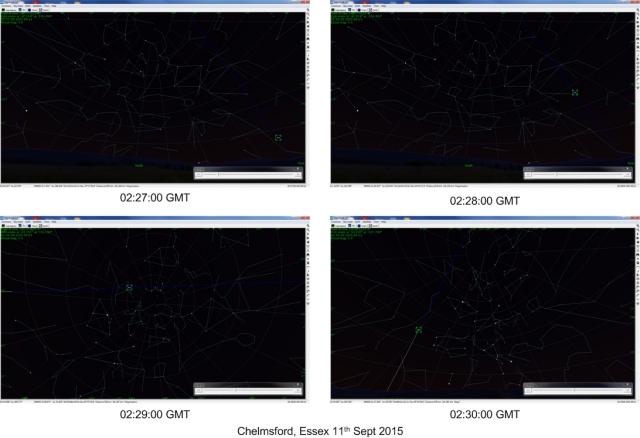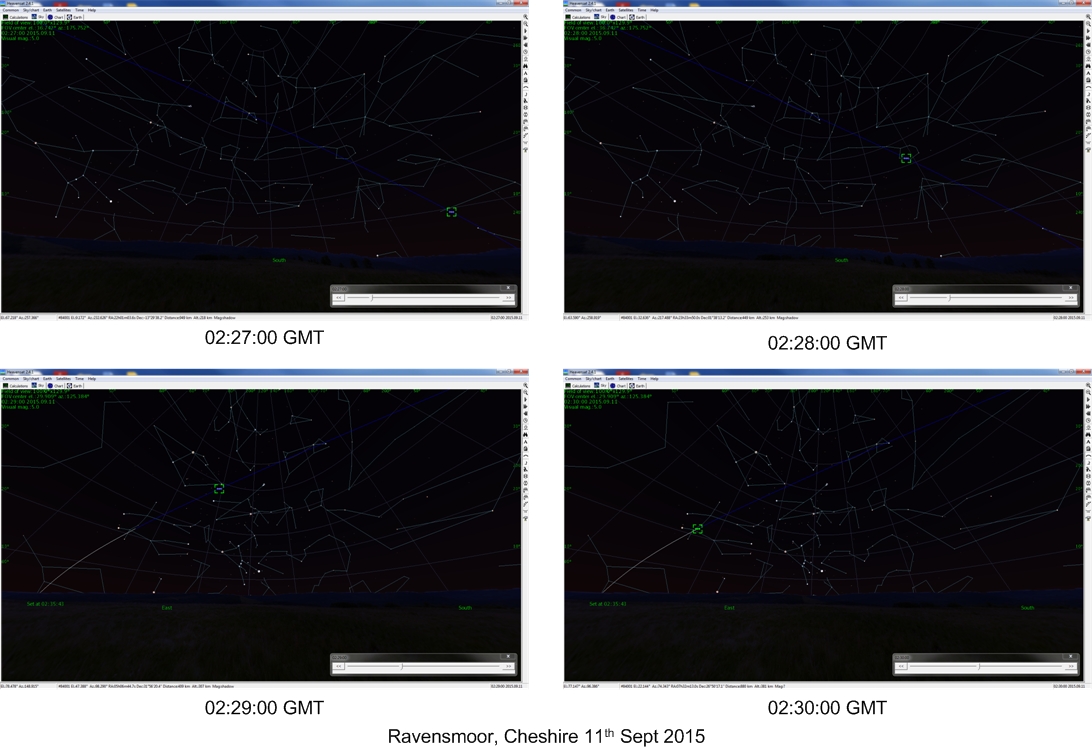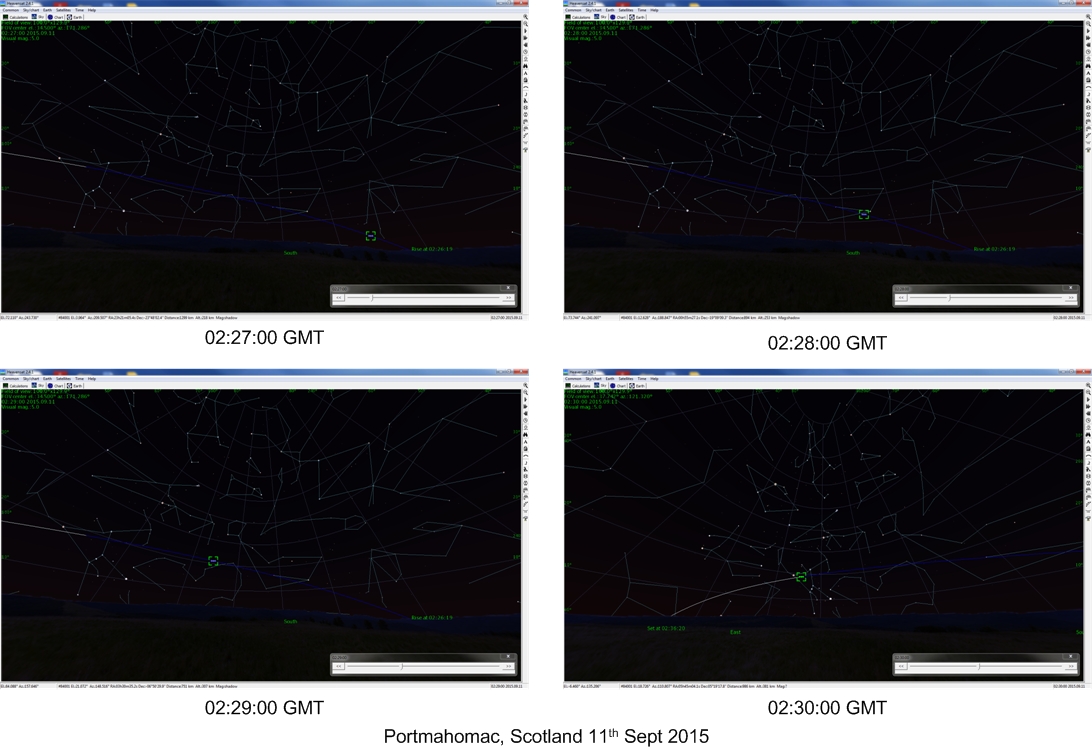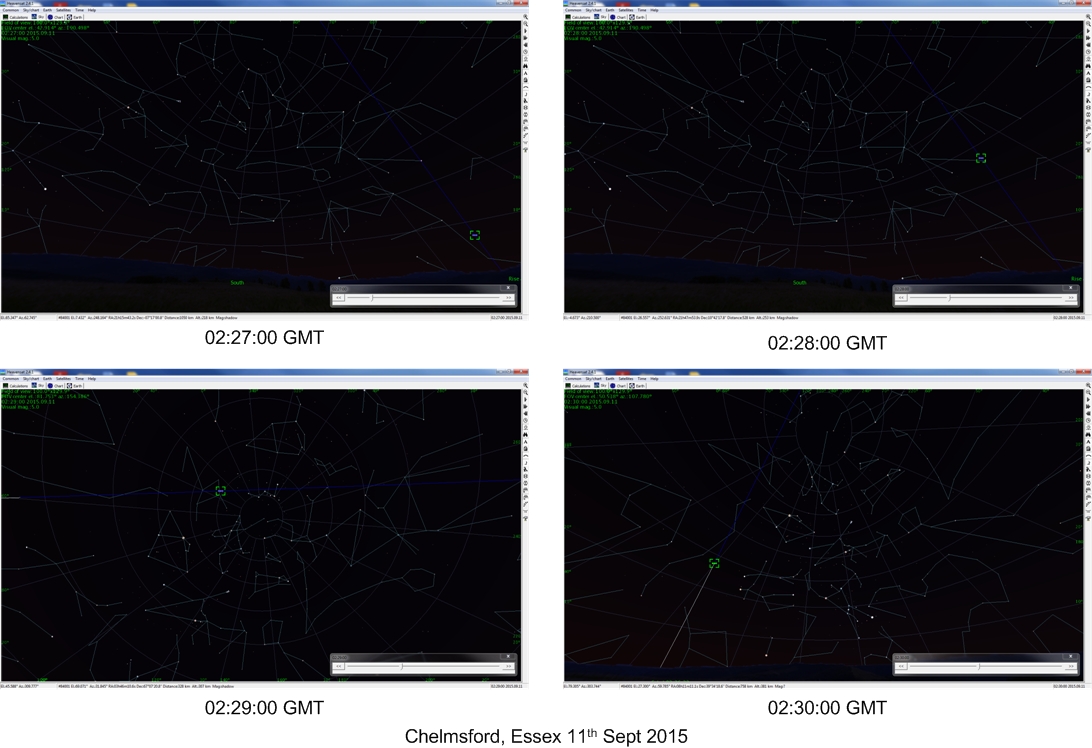› Forums › General Discussion › Soyuz Fregat VS12 Insertion Burn Visibility
- This topic has 3 replies, 2 voices, and was last updated 10 years, 3 months ago by
 William Stewart.
William Stewart.
-
AuthorPosts
-
10 September 2015 at 12:46 pm #573470
 William StewartParticipant
William StewartParticipantDear All,
Just a quick note to advise of a potentially interesting satellite observation that may be visible from the British Isles in the early hours of Friday 11th September 2015.
Cee Bassa has posted a notification here that provides background details. In short a Soyuz is scheduled to launch at 02:08:10 GMT tomorrow morning from Guiana and will put two Galileo satellites in orbit. The insertion burn that places the payload into the transfer orbit may be visible from Europe. Cees cautions that “It is unclear what visual effects the burn and the shutdown may have, but observers in Northern Europe are well placed to observe what ever may be visible.“
The burn is expected to commence at 02:18:34 GMT when the payload is below the horizon as viewed from the British Isles. It will rise above the SW horizon (depending on the observer’s location) at around 02:26 GMT and the burn will continue until 02:31:42 GMT.
The payload will be passing over the German / Denmark border and hence will appear higher in the sky for observers in the British Isles who are closer to that location. Being at an altitude of circa 400km, the apparent position of the payload against the background stars will be highly dependant on the observers’ geographic location. The images below simulate the view of the night sky from Essex, Cheshire and Northern Scotland assuming liftoff and burn occur on schedule. Observers at other locations should hopefully be able to interpolate with sufficient accuracy to keep an eye on the general area should the exhaust plume be bright enough. The line in blue represents the track against the sky when the payload is in shadow (with perhaps the exhaust plume visible) while the track in white is when the payload is in sunlight. The burn is expected to complete approximately 90 seconds after the payload enters sunlight.
Note that the quoted times are GMT – please remember to add 1 hour for BST.
With many thanks as always to Cees for the “heads up” on this.
Good luck & clear skies – hopefully the launch proceeds as scheduled (keep an eye on http://spaceflightnow.com/ for updates).
William
10 September 2015 at 7:01 pm #577031 Nick JamesParticipant
Nick JamesParticipantThanks for posting this. The forecast for Essex looks good for tomorrow morning so I’ll have a go at this. A good opportunity to image 67P (Rosetta’s comet) as well at around the same time.
11 September 2015 at 4:50 am #577032 Nick JamesParticipant
Nick JamesParticipantNothing spectacular. I could see it from shadow exit at 02:30 but it just looked like a normal faint satellite.
11 September 2015 at 7:28 am #577033 William StewartParticipant
William StewartParticipantRather unspectacular from Cheshire too, with the lower elevation and patchy mist not helping matters. Unable to pick it up in 12×80 binos until shadow exit. Visual appearance resembled any other faint satellite with no evidence of elongation / plume etc.
Cees, observing from The Netherlands, had better luck with his image suggesting evidence of venting.
-
AuthorPosts
- You must be logged in to reply to this topic.




